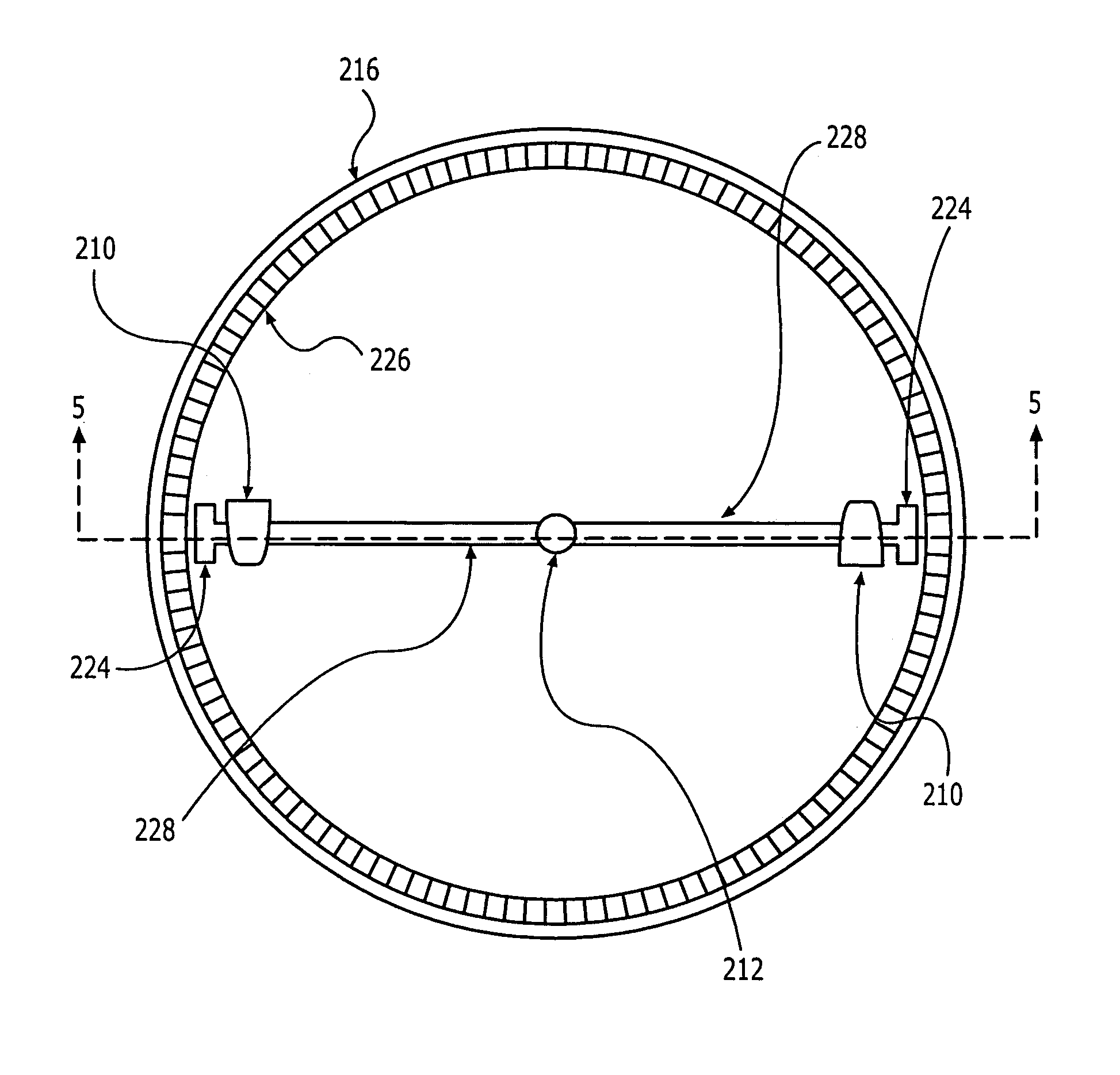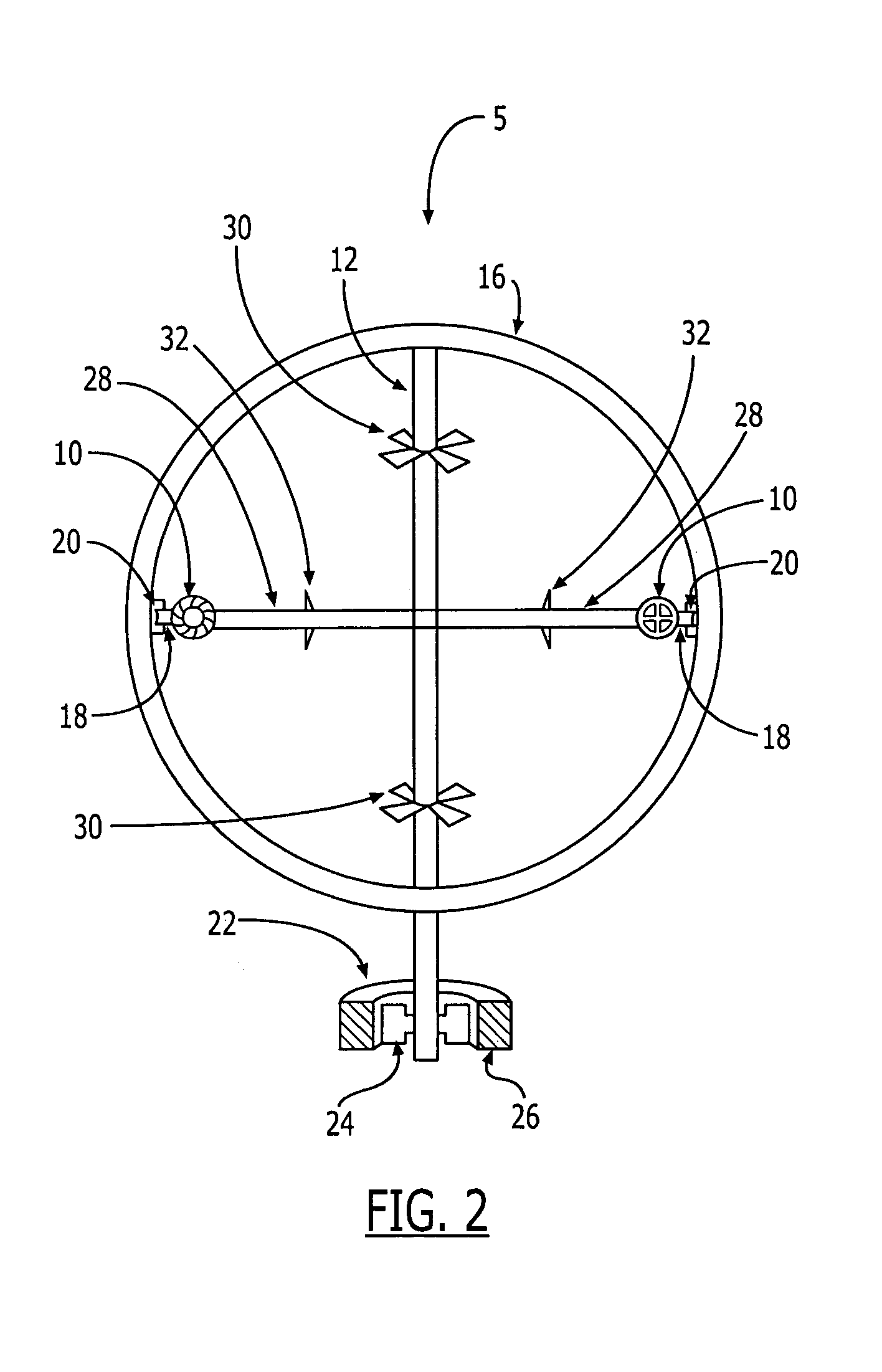Nuclear-fueled power generating system
a technology of nuclear power generation and jet engines, applied in the direction of nuclear engineering problems, machines/engines, greenhouse gas reduction, etc., can solve the problems of multiple barriers to the continued operation of existing nuclear reactors, increase the cost of operating nuclear power generation stations, and reduce the overall electrical generation efficiency, etc., to achieve rapid and complete shutdown of jet engines
- Summary
- Abstract
- Description
- Claims
- Application Information
AI Technical Summary
Problems solved by technology
Method used
Image
Examples
Embodiment Construction
[0028]A power generating system 5, in accordance with a preferred embodiment of the present invention as shown in FIGS. 1 and 2, has two nuclear fueled jet turbine engines 10, attaching members 28, a rotatable central shaft 12, an apparatus for converting rotational motion to electricity 22, and a containment structure 16.
[0029]Each of the jet turbine engines 10 is attached to one end of each of the connecting members 28. A second end of each of the attaching members 28, opposite the engines 10, is attached to the central shaft at a first position on the central shaft 12 such that the connecting members 28 are aligned and diametrically opposed thereto. The engines 10 and the attaching members 28 are oriented such that thrust generated by the engines 10 is perpendicular to a longitudinal axis of the central shaft 12 thereby causing the central shaft 12 to rotate about the longitudinal axis of the central shaft 12 when the engines 10 are operating. The central shaft 12 and the connect...
PUM
 Login to View More
Login to View More Abstract
Description
Claims
Application Information
 Login to View More
Login to View More - R&D
- Intellectual Property
- Life Sciences
- Materials
- Tech Scout
- Unparalleled Data Quality
- Higher Quality Content
- 60% Fewer Hallucinations
Browse by: Latest US Patents, China's latest patents, Technical Efficacy Thesaurus, Application Domain, Technology Topic, Popular Technical Reports.
© 2025 PatSnap. All rights reserved.Legal|Privacy policy|Modern Slavery Act Transparency Statement|Sitemap|About US| Contact US: help@patsnap.com



